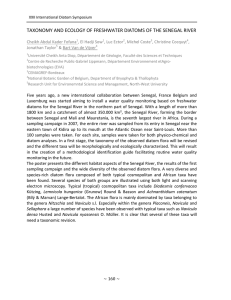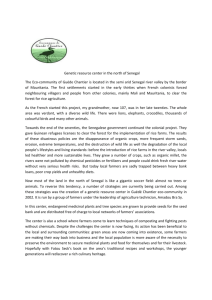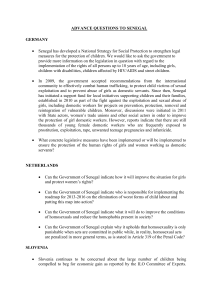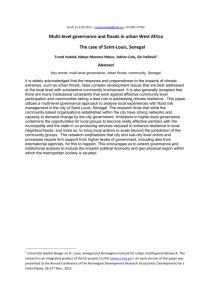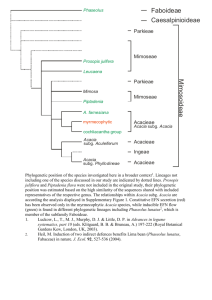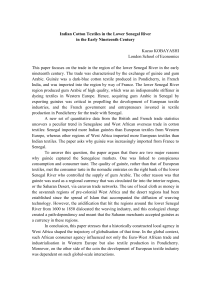Abstract Phd thesis
advertisement
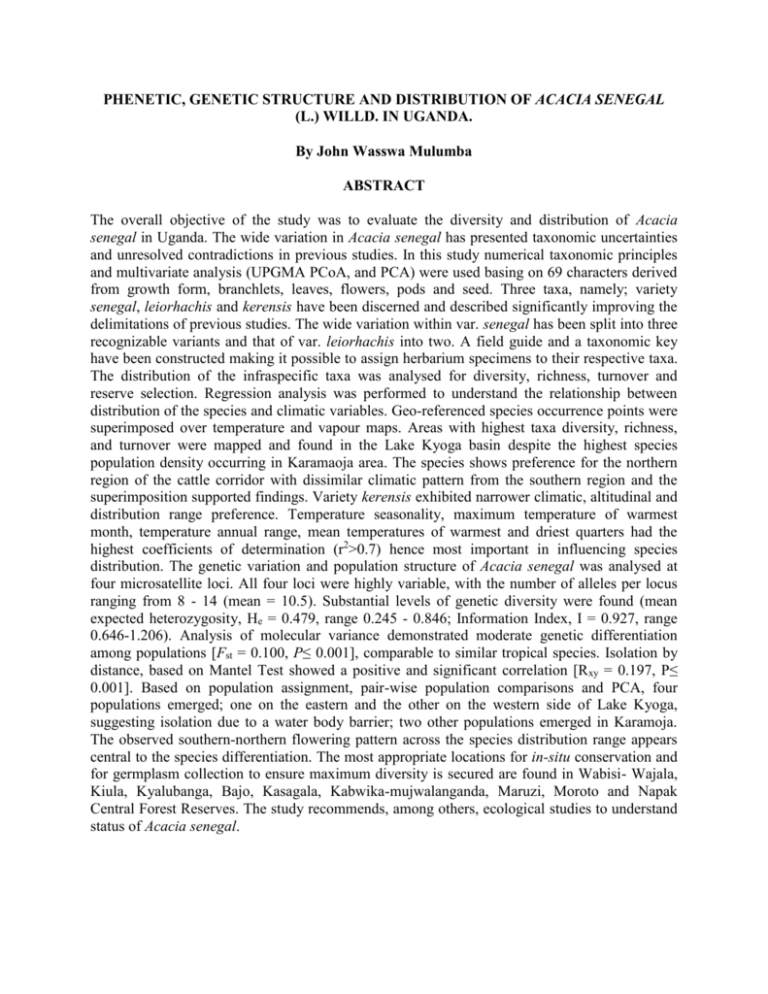
PHENETIC, GENETIC STRUCTURE AND DISTRIBUTION OF ACACIA SENEGAL (L.) WILLD. IN UGANDA. By John Wasswa Mulumba ABSTRACT The overall objective of the study was to evaluate the diversity and distribution of Acacia senegal in Uganda. The wide variation in Acacia senegal has presented taxonomic uncertainties and unresolved contradictions in previous studies. In this study numerical taxonomic principles and multivariate analysis (UPGMA PCoA, and PCA) were used basing on 69 characters derived from growth form, branchlets, leaves, flowers, pods and seed. Three taxa, namely; variety senegal, leiorhachis and kerensis have been discerned and described significantly improving the delimitations of previous studies. The wide variation within var. senegal has been split into three recognizable variants and that of var. leiorhachis into two. A field guide and a taxonomic key have been constructed making it possible to assign herbarium specimens to their respective taxa. The distribution of the infraspecific taxa was analysed for diversity, richness, turnover and reserve selection. Regression analysis was performed to understand the relationship between distribution of the species and climatic variables. Geo-referenced species occurrence points were superimposed over temperature and vapour maps. Areas with highest taxa diversity, richness, and turnover were mapped and found in the Lake Kyoga basin despite the highest species population density occurring in Karamaoja area. The species shows preference for the northern region of the cattle corridor with dissimilar climatic pattern from the southern region and the superimposition supported findings. Variety kerensis exhibited narrower climatic, altitudinal and distribution range preference. Temperature seasonality, maximum temperature of warmest month, temperature annual range, mean temperatures of warmest and driest quarters had the highest coefficients of determination (r2>0.7) hence most important in influencing species distribution. The genetic variation and population structure of Acacia senegal was analysed at four microsatellite loci. All four loci were highly variable, with the number of alleles per locus ranging from 8 - 14 (mean = 10.5). Substantial levels of genetic diversity were found (mean expected heterozygosity, He = 0.479, range 0.245 - 0.846; Information Index, I = 0.927, range 0.646-1.206). Analysis of molecular variance demonstrated moderate genetic differentiation among populations [Fst = 0.100, P≤ 0.001], comparable to similar tropical species. Isolation by distance, based on Mantel Test showed a positive and significant correlation [Rxy = 0.197, P≤ 0.001]. Based on population assignment, pair-wise population comparisons and PCA, four populations emerged; one on the eastern and the other on the western side of Lake Kyoga, suggesting isolation due to a water body barrier; two other populations emerged in Karamoja. The observed southern-northern flowering pattern across the species distribution range appears central to the species differentiation. The most appropriate locations for in-situ conservation and for germplasm collection to ensure maximum diversity is secured are found in Wabisi- Wajala, Kiula, Kyalubanga, Bajo, Kasagala, Kabwika-mujwalanganda, Maruzi, Moroto and Napak Central Forest Reserves. The study recommends, among others, ecological studies to understand status of Acacia senegal.

